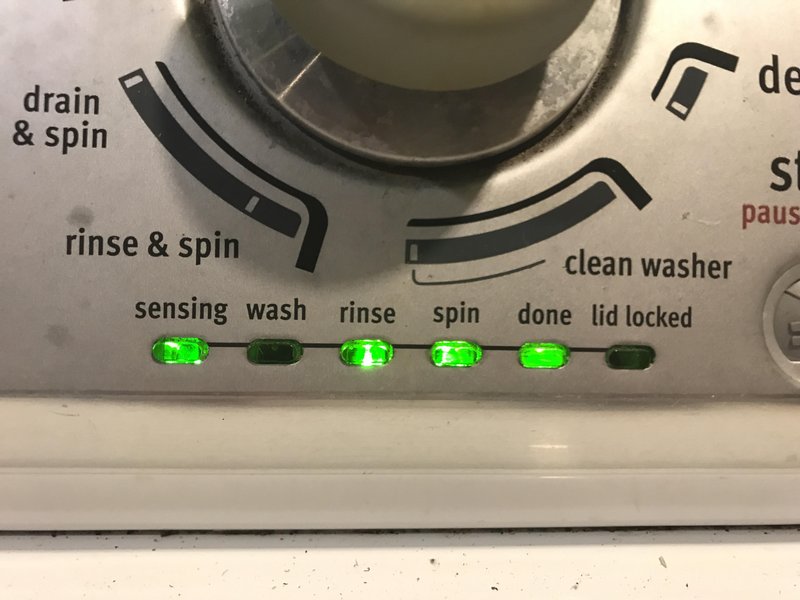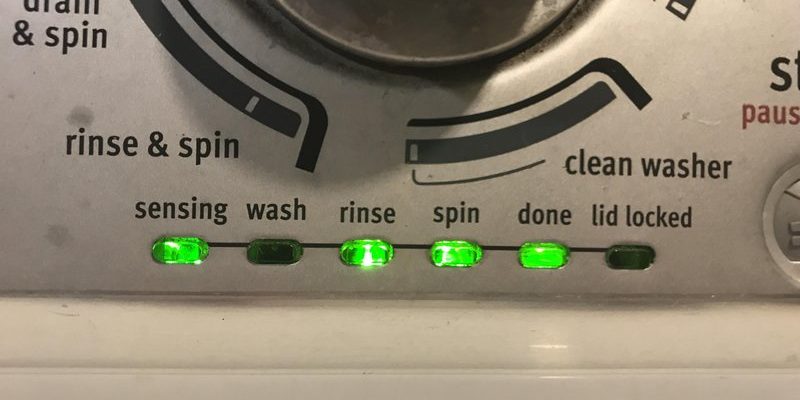
Error code E3 in Maytag washing machines typically signals an issue with the machine’s drive system. It’s akin to a hiccup in the machine’s ability to spin or agitate. Whenever it appears, the machine is essentially saying, “Hey, something’s not quite right in the agitator spin department.” This isn’t just technical jargon; it’s your washing machine’s way of asking for a bit of troubleshooting TLC. Let’s dive into what might be causing this issue and how you can tackle it.
Understanding Your Maytag Washing Machine’s Drive System
Before we jump straight into the potential causes of error code E3, it’s important to understand what the drive system is all about. Think of the drive system as the heart of your washing machine. If it’s not working correctly, the whole washing mechanism could be off. It’s responsible for the spinning and agitating actions that clean your clothes.
The drive system is made up of several components: the motor, the drive pulley, the drive belt, and the clutch assembly. Each of these parts has its own important role. The motor is like the powerhouse, generating the energy needed. The drive pulley and belt work in tandem, transferring this energy. Finally, the clutch assembly controls the movement, adjusting the speed of the spin.
When any part of this system misbehaves, you may see the E3 error code pop up. Imagine it like a team where every member has a key function; if one person drops the ball, the whole team feels it. So, let’s explore what might cause these essential parts to malfunction.
The Role of the Drive Motor
The drive motor is crucial for the washing machine’s operation, providing the necessary power for spinning and agitating. If your washer is flashing the E3 error, it might be pointing to a motor problem. Think of the motor like a car engine; if the engine isn’t firing on all cylinders, the car won’t run smoothly.
Sometimes, the motor can overheat, shut down mid-cycle, or not start at all. This could happen due to various reasons, such as excess load or a blockage within the machine. A noisy motor can be a telltale sign, like a rattling engine. The solution might involve reshuffling the load or checking for obstructions that could be causing strain.
If these steps don’t work, it may be time to have the motor inspected by a professional. It’s like calling a mechanic when your car makes an unfamiliar noise. They can determine if the motor needs repairs or a complete replacement.
Issues with the Drive Belt or Pulley
The drive belt and pulley are like a tag team, transferring the motor’s energy to enable spinning. If the E3 error appears, there might be an issue here. Imagine trying to walk on a treadmill with a loose belt – you wouldn’t get anywhere!
A worn or broken belt can’t efficiently transfer energy, and you might hear a squeaking sound, just as you would if you had a slipping fan belt in your car. Replacing or adjusting the drive belt might be necessary. This is a task often undertaken by professionals, but if you’re feeling adventurous and handy, it’s possible to do it yourself with the right tools and guidance.
Always ensure the belt is properly aligned and not too slack or too tight. An improper fit can cause friction and lead to more problems down the line, which is why a precise fit is as important as the belt itself.
The Clutch Assembly Dilemma
The clutch assembly works like the transmission in your vehicle, controlling the speed and transferring the energy from the motor to the drum. If the E3 error arises, a clutch issue might be at fault, similar to a car that struggles to shift gears smoothly.
You might notice unusual noises during the spin cycle, or your washing machine may have a hard time reaching its desired spin speed. In such cases, the clutch might be worn out or damaged from regular use over time. Checking the clutch involves examining its components and potentially replacing worn-out parts.
This is usually a bit more complex, akin to replacing parts in a car’s gearbox, and could require professional help to ensure it’s done correctly. Always consider your expertise level and comfort with appliance repairs before diving in.
Preventative Measures to Avoid Error Code E3
To keep your Maytag washing machine running smoothly and to prevent the E3 error from appearing, there are several preventative steps you can take. First, avoid overloading your washing machine. It’s tempting to cram everything in one load, but think of it like stuffing a suitcase too full – it’s bound to burst or cause stress on the components.
Regular maintenance checks can also do wonders. Like how you wouldn’t drive a car for years without a service, your washing machine needs the occasional once-over. Check hoses, belts, and the machine’s balance to ensure everything’s in working order. It’s always easier to fix something small before it becomes a bigger issue.
Finally, listen to your washing machine. If it starts making unusual noises, take note. Early detection of problems can save time, money, and hassle in the long run. With these steps, your washing machine can remain a dependable household ally for years to come.
